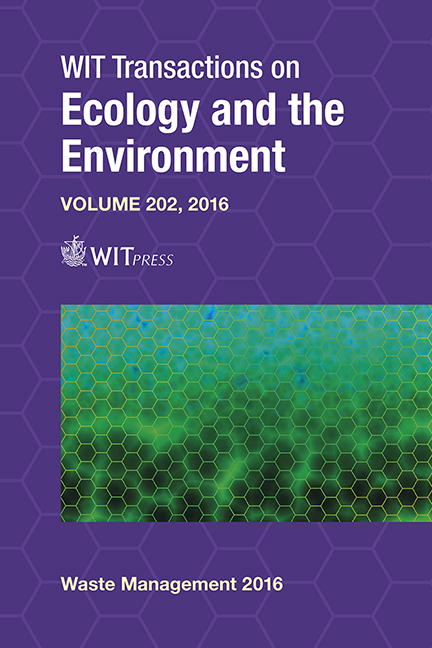Refinery Waste: The Spent Hydroprocessing Catalyst And Its Recycling Options
Price
Free (open access)
Transaction
Volume
202
Pages
12
Page Range
219 - 230
Published
2016
Size
953 kb
Paper DOI
10.2495/WM160201
Copyright
WIT Press
Author(s)
M. Marafi, M. S. Rana
Abstract
An industrial waste spent residue hydroprocessing catalyst, contains high levels of metals and carbon, which decreases catalytic activity and forces the refiner to replace the catalyst. The catalyst was unloaded from a KNPC refinery atmospheric residue desulfurization unit. Recycling of spent catalyst waste is at the leading edge of environmentally sound technology and sets the standards for handling the solid waste in the refinery as it is considered hazardous. Hence a concept for a recycling approach to minimize industrial spent catalyst waste has been applied for the recovery of metals (Ni, V, Mo) as a first step while supporting [Al(OH)3] in a subsequent process. The recycling of a spent catalyst involves various steps such as de-oiling, drying, grinding, sieving, and decoking. In the subsequent steps, the de-coked spent catalysts were treated with acid-base reaction media to separate the various components of the spent catalyst. The metal recovery as a function of leaching agents has been investigated by using hydrometallurgical processes. A brief account has also been reported for conventional processes and recent approaches employed by using pyro-metallurgical and hydrometallurgical routes. Considering various routes of metal extractions, the EDTA containing chelation process has shown its potential in high value metal extraction of up to 99% recovery. The recovered metals and support have enabled industrial application for use as alternative raw materials for catalyst preparation.
Keywords
spent catalyst, hazardous waste, waste utilization, metal recovery





